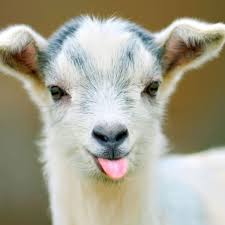N The effect of classical and non-classical feed resources and their nutritive composition on reproductive success and failure in goat and sheep production.
Feed resources in sheep and goats nutrition
Keywords:
Classical Feed Resources, Non-Classical Feed Resources, Feed Composition, Reproduction, Sheep, GoatsAbstract
For sheep and goats’ nutrition, there are two types of feed resources: classical feed resources and non-classical feed resources. They are also known as conventional or traditional feed resources and non-conventional or non-conventional feed resources in other contexts. Classical feed resources (CFR) refer to those which are traditional used for animal feeding. The non-classical feed resources (NCFR) refer to all feeds that haven't historically been used for feeding livestock and aren't used commercially to produce livestock feeds. The categorization of feed resources as traditional versus non-traditional have encountered some challenges hence might not be universal because the classification in most instant is dependent on geographical or agro-ecological regions which differ in their endowment of types of feed resources. There is a significant imbalance between the supply and demand of classical feed resources for sheep and goats worldwide, so finding alternative feed sources is necessary to balance the supply and demand of these feed resources. The type, quantity, and composition of feed resources given to sheep and goats at different stages of reproduction, especially prior to and during the breeding season, affect the reproductive effectiveness of the does and ewes. Sheep and goats are raised primarily on grazing feed resources, and the nutritional status of the flock directly affects its ability to reproduce. The most common types of fodder, aside from on-farm and commercial diets, are grasses and legumes. In addition to enhancing growth and meat yield, the majority of targeted feeding regimens are concentrating more and more on enhancing reproductive performance, which has been linked to profitability for the goat and sheep industry.
The reproductive efficiency of grazed sheep and goats might be low as a result of seasonal feed shortages and forage with poor nutritional value. Hence a combination of feed resources and their ingredients may be used in a diet to optimize nutrient combinations for ideal reproductive performance. Purely herbivorous, ruminants can live off of forage alone. Concentrates can also be made available to them in addition to forage, as this enhances their overall reproductive performance. Roughages are bulky feeds with a low amount of energy per unit volume (i.e. hay, straw) and a lot of moisture (grass). Grass becomes scarce and nutrient-poor during the dry season, which has a negative effect on reproductive performance. Conventional concentrate supplementation is economically inappropriate in low input systems, necessitating the development of more cost-efficient and sustainable alternative feed resources. In many regions of the tropics and subtropics, using tree parts (e.g., leaves) and shrubs as alternative sources of feed for ruminant livestock is becoming more and more significant.
The energy and protein needed for reproduction may be provided by these feed sources, but they may also contain plant secondary compounds that have an impact on different stages of the reproductive cycle. Most classical feed resources (grains, cereals, legumes, etc.) are expensive and difficult to come by in many parts of the third world. Because of this, it's crucial to search for alternative, non-classical feed resources that might include beneficial ingredients for sheep and goats’ diets. In poor countries where sheep and goat production is concentrated in smallholder farming the use of non-classical feed resources has been the solution to the problems of insufficient feed supply and poor feed quality. However, the problem with some of these non-classical feed resources is their low energy, protein, minerals and might contain high amounts of anti-nutritional components which might compromise in certain instance reproduction in sheep and goats. The impact of some classical and non-classical feed resources on the success and failure of reproduction in sheep and goats’ production is covered in the paper.

Published
How to Cite
Issue
Section
Copyright (c) 2024 Never Assan

This work is licensed under a Creative Commons Attribution-NonCommercial-NoDerivatives 4.0 International License.



